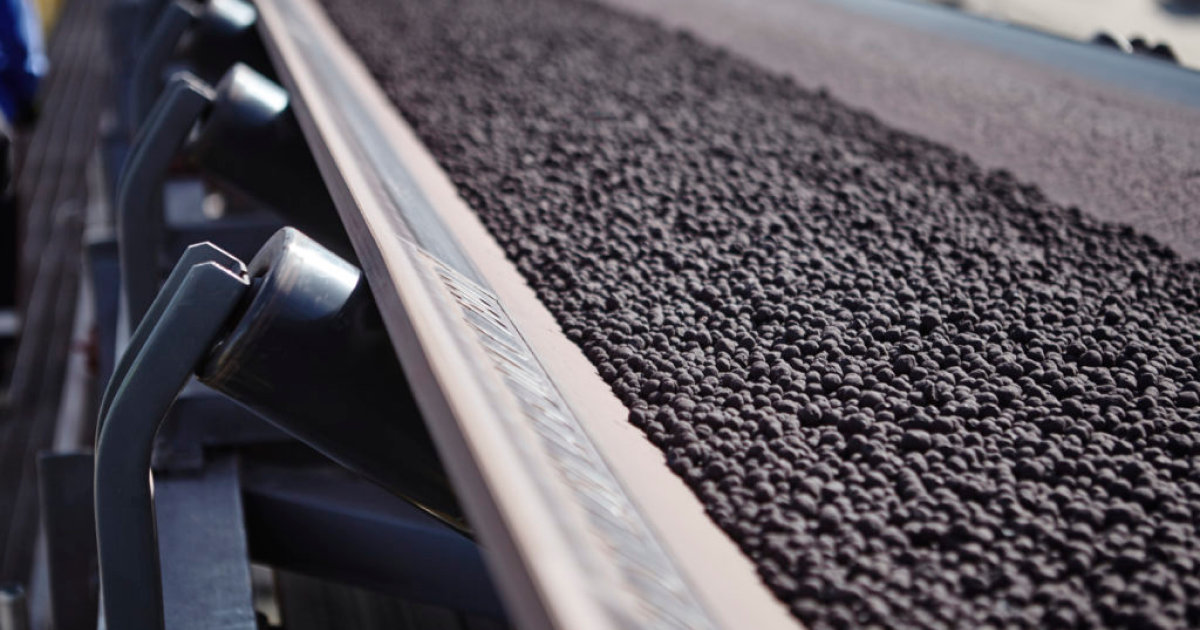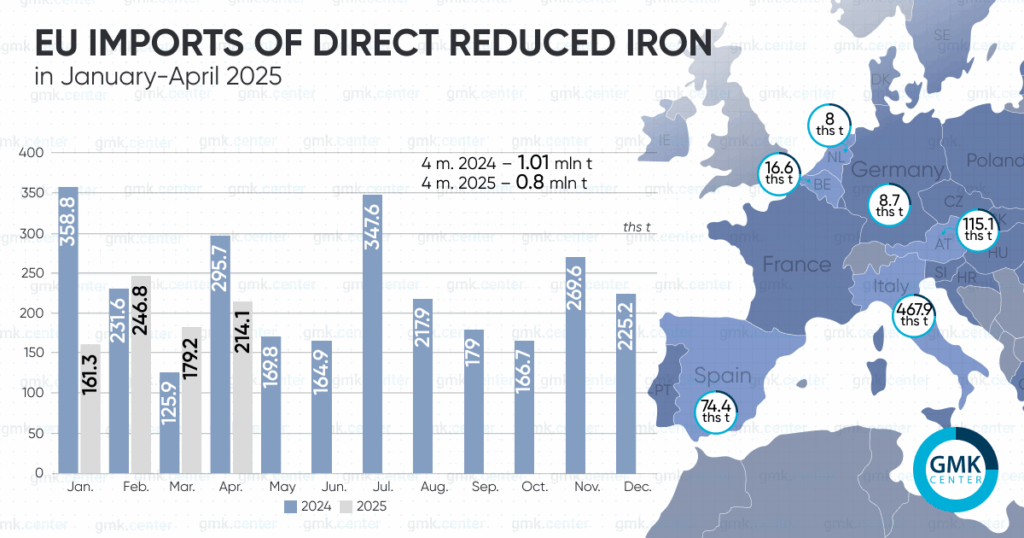
News Global Market DRI 208 18 June 2025
The indicator was affected by the almost complete cessation of imports by Germany and the Netherlands
According to the results for January-April 2025, the European Union reduced imports of direct reduced iron (DRI) by 20.8% compared to the same period in 2024, to 801.45 thousand tons. This is evidenced by GMK Center calculations based on Eurostat data.
The main importers of direct reduced iron among EU countries in the period were Italy, Spain, and Austria, in particular:
- Italy – 467.94 thousand tons (+94.5% y/y);
- Austria – 115.06 thousand tons (+25.6% y/y);
- Spain – 74.37 thousand tons (+19.2% y/y).
The almost complete cessation of imports by Germany and the Netherlands had a negative impact on import volumes. In particular, 280.82 thousand tons of DRI were shipped to the German market in January-April 2024, while this year only 8.7 thousand tons were shipped, and 122.06 thousand tons were shipped to the Dutch market compared to 8 tons in the first four months of 2025. At the same time, a sharp increase in imports by Italian steelmakers and moderate growth in demand from other key consumers limited a deeper decline in the indicator.

Russia is the largest supplier of DRI to the European Union. In January-April, Russian companies shipped 241.34 thousand tons of direct reduced iron to European consumers, which is 44.1% less than in the same period last year.
The main importers of Russian products are Italy (143,500 tons, down 36.3% year-on-year) and Poland (54,990 tons, up 8.1% year-on-year).
Libya shipped 99.8 thousand tons of DRI to the EU in four months, reducing the figure by 26.7% year-on-year. Venezuela exported 272.26 thousand tons of the corresponding products to the European Union (+4.2 times year-on-year). Supplies from Venezuela are recording significant growth, indicating a reorientation of supply chains. In 2023, 133 thousand tons of DRI were imported from this direction, and in 2024 – 293.98 thousand tons.
In April, the EU imported 214.14 thousand tons of DRI, which is 27.6% less y-o-y, but 19.5% more m-o-m.
Russia exported 55.04 thousand tons of raw materials to the EU during the month (-68.9% y-o-y; -22.3% m-o-m), Libya – 11.02 thousand tons (-60.5% y-o-y; +12.2 times m-o-m). Venezuela shipped 116.78 thousand tons of DRI to the EU (0 thousand tons in April 2024; +2.9 times month-on-month).
As GMK Center reported earlier, at the end of 2024, the EU increased its imports of direct reduced iron from third countries by 5.4% compared to 2023, to 2.75 million tons. In 2023, there was an 11.1% y/y decline. The largest importers of DRI among EU member states last year were: Italy – 659,730 tons (-23.7% y/y), the Netherlands – 527,270 tons (+423%), and Germany – 438,460 tons (-33.5%).
The key suppliers of DRI to the EU in 2024 were traditionally Russia, Libya, the US, Venezuela, and Canada. These countries account for about 85% of raw material supplies to the bloc, with Russia accounting for 38%.




